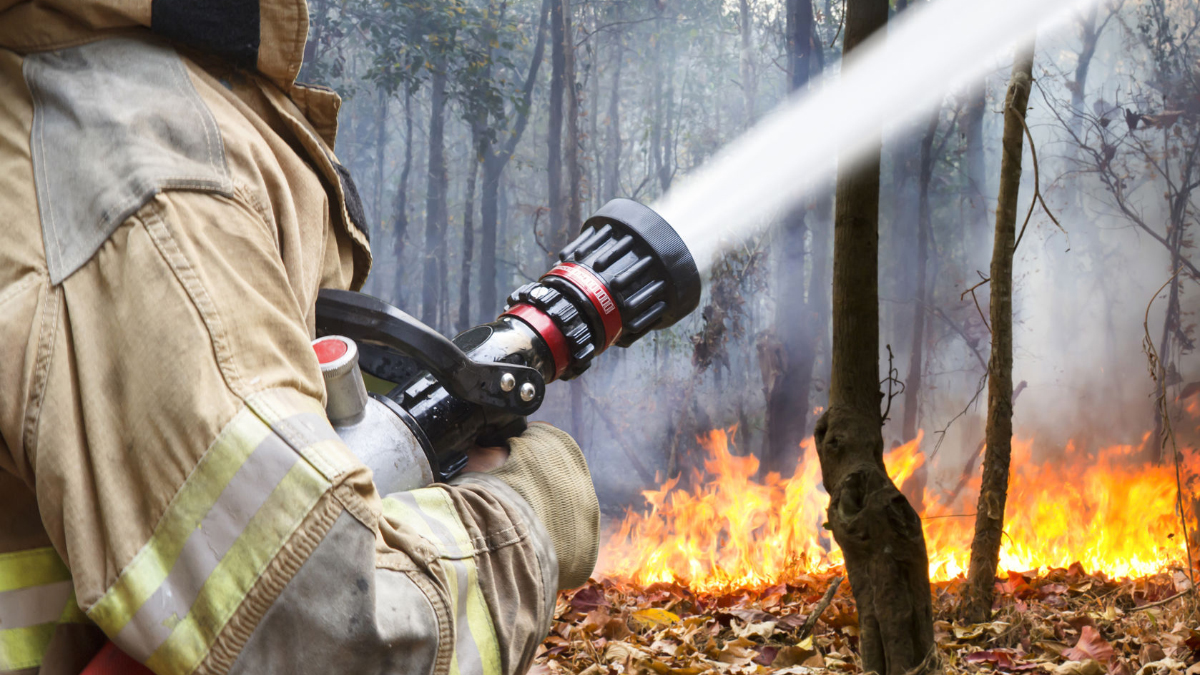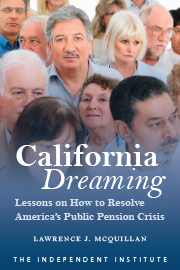More than 40 deaths in the Wine Country wildfires last month marked the deadliest fire season in recent state history and in September, Los Angeles experienced its largest wildfire ever. To avoid a repeat, California needs to reform its approach to wildfire management.
The California Department of Forestry and Fire Prevention, known as Cal Fire, bears primary responsibility for fire prevention and suppression on more than 31 million acres of California land that is privately owned, state owned, watershed, and rangeland—about one-third of the state. The U.S. Forest Service handles these duties on federal land.
Cal Fire’s $2.2 billion budget has increased 45 percent since fiscal year 2014-15, but 80 percent or more of its budget typically goes to fire suppression, not prevention. Cal Fire is also a “first responder” to car accidents and similar incidents more than 350,000 times a year, a diversion from critical fire-prevention efforts.
Cal Fire’s fire-prevention fund, which pays for reducing hazardous fuels such as dead trees and vegetation, and provides fire-prevention education and planning, has decreased in recent years, with grants to local fire-prevention efforts declining. Cal Fire’s increasing neglect of prevention services has been disastrous, and reflects perverse incentives.
Fire managers face strong incentives to emphasize suppression, where budgets are larger and risks are lower. Suppressing wildfires is more heroic than clearing brush, chopping dead trees, creating containment lines, and conducting “controlled burns.” Poor prevention spending also plagues the U.S. Forest Service.
A 2016 report by the U.S. Department of Agriculture inspector general found that the Forest Service “lacks a consistent, cross-agency process for selecting its highest priority hazardous fuels reduction projects for completion.” Local concerns are often ignored.
A 2015 investigation by the Sacramento Bee found that Cal Fire had not spent $43 million of a special state fire-prevention fee assessed on some 800,000 rural property owners. Then-state Senate President Darrell Steinberg said, “I just don’t want money sitting there when there’s a lot of prevention to be had and an increase in the number of fires.”
In vulnerable areas, failure to spend the money shortchanged local projects such as removal of “flammable vegetation and dead trees from around the homes of low-income senior citizens and disabled residents” in Nevada County. Perhaps worse, the state fees prevented some local communities from independently raising money for their own much needed prevention efforts.
Cal Fire and the U.S. Forest Service sweep in after fires start to focus on suppression, rather than year-round prevention. Expensive and inefficient wildfire management strategies increase budgets, but put people and property at greater risk. Bold reforms are urgently needed.
Fire agencies in California must emphasize fuel reduction—that is clearing grass and brush and thinning forested areas. Controlled burns and vegetation clearing must become continuous priorities. This unglamorous work does not produce the same growing budgets and glory to firefighters, but it reduces catastrophic fires and future loss of life. The Forest Service is testing a policyto let many naturally occurring, low-intensity wildfires burn to eliminate “excess fuels.”
Privatization of public land would encourage proper stewardship and entrepreneurial approaches to fuel reduction, such as greater harvesting of dead trees for wood products, and greater use of high-tech drones, cameras and sensors. Drones equipped with special cameras and lasers can locate andmap high-fuel areas, covering the forest canopy to the forest floor. They also can detect smoke and heat of a fire at its earliest stages, day or night, in remote locations or heavily populated areas. Privatization would realign incentives for optimal fire prevention, something that government “absentee owners” lack.
Property owners should work with local fire districts to develop priorities, identify critical fuel reduction targets, and direct prevention strategies that best suit their community. Cal Fire, the Forest Service, and power companies should follow the direction of local partners. They should also train local communities on how to actively defend their property. This shift in control would connect needs to priorities and produce greater accountability.
Decentralizing wildfire management is not an entirely new idea. Proposals to delegate a larger role in funding, planning and decision-making to local communities have been advanced with regard to the Forest Service. This policy would allow for expedited fuel removal, flexibility in planning, and the ability to waive federally mandated procedures and regulations.
Local communities have lost too much self-determination. As recent catastrophes show, it’s time to empower local fire districts and private landowners to direct prevention efforts year-round, and increase their own proactive capabilities. This would establish proper priorities and stricter accountability, and ensure greater efforts to protect the public.










